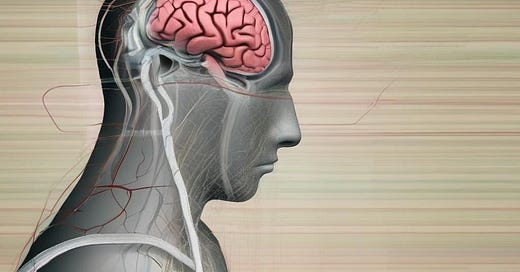Can Hyperbaric Oxygen Therapy Cure Traumatic Brain Injury (TBI)?
Curious if Hyperbaric Oxygen Therapy can help with Traumatic Brain Injury (TBI)? Learn how it may support recovery and what the latest research shows.
Traumatic brain injuries (TBI) are no small matter—they can completely change a person’s life, affecting everything from memory to mood. As someone who’s spent the last year diving into brain health and ways to slow down brain aging, I’ve been exploring a treatment that’s getting more attention these days: Hyperbaric Oxygen Therapy (HBOT). While it’s mostly known for helping with things like wound healing, there’s growing interest in its potential to help the brain recover, especially from TBIs.
In this article, I’m going to take you through my journey with HBOT and share what I’ve learned about its possible benefits for TBI recovery. If you’ve ever wondered if this oxygen-based therapy could help heal a brain injury, keep reading—I’ve got some insights to share!
Who Am I?
Hello! I am Dr. Mark Chern, the author of this article. In the past year, I have been researching potential interventions for improving brain function as it relates to dementia and Alzheimer’s disease. One of the interventions I have been exploring is hyperbaric oxygen therapy, which I have been using and documenting in my substack articles.
I use a hard case hyperbaric oxygen chamber at a pressure of 2.0 ATA. This is akin to placing myself 10 meters (or 33 feet) underwater, while breathing in pure oxygen.
While the intent of my intervention has been to improve my brain function (find out more on the ReverseBrainAge (RBA) project), I also read up on and share my learnings here on substack.
Read on to find out more about HBOT for PTSD!
What is Hyperbaric Oxygen Therapy (HBOT)?
Hyperbaric Oxygen Therapy (HBOT) might sound a bit futuristic, but it’s a medical treatment that’s been around for decades1. Essentially, it involves breathing 100% oxygen inside a chamber that’s pressurized higher than the normal air we breathe. By increasing the pressure, more oxygen dissolves into the blood, allowing oxygen to reach tissues that may be lacking it.
While HBOT is commonly used to treat conditions like wound healing or carbon monoxide poisoning, recent research has focused on its potential to help with brain injuries, particularly mild traumatic brain injury (mTBI) and post-concussion syndrome (PCS). After a concussion, some people experience long-term symptoms like memory issues, headaches, or mood swings, and HBOT has shown promise as a treatment to help manage these persistent issues.
A key reason for the interest in HBOT is its ability to promote healing by increasing blood flow and potentially encouraging the growth of new blood vessels, a process known as angiogenesis2. This could help the brain repair itself after injury, but as with many treatments, results have been mixed.
Also read: Can Hyperbaric Therapy Cure PTSD?
What is Traumatic Brain Injury (TBI)?
Traumatic Brain Injury (TBI) occurs when an external force, such as a blow to the head, jolt, or penetration, disrupts normal brain function3. This can result in temporary or permanent impairments in cognitive, physical, and emotional functions. TBI can happen due to various incidents such as vehicle accidents, falls, sports injuries, assaults, or even through activities like combat.
Types of TBI
TBI is typically classified into two main categories4:
Primary Injury: This refers to the immediate damage caused by the external force impacting the brain. The injury may involve physical damage such as bruising of the brain tissue (contusions), bleeding (hemorrhages), or skull fractures. This type of injury occurs instantaneously at the moment of impact.
Secondary Injury: Secondary injuries are the biochemical and physiological responses that occur after the initial trauma, such as inflammation, increased pressure within the skull (intracranial pressure), and decreased blood flow to the brain. These processes can worsen the damage and lead to further neuronal injury, making early intervention and management crucial to minimize long-term effects.
Severity Classification of TBI
The severity of TBI is usually categorized based on clinical assessments, including the Glasgow Coma Scale (GCS), which evaluates a person's level of consciousness and neurological function5. The GCS assesses motor responses, eye movements, and verbal responses to stimuli, and provides a score that helps categorize the injury:
Mild TBI (Concussion): Involves a GCS score of 13-15. Symptoms may include brief loss of consciousness (if any) and confusion. The person may experience headaches, dizziness, and memory issues. Most individuals recover within a few weeks, but for some, symptoms may persist, leading to a condition known as post-concussion syndrome (PCS).
Moderate TBI: This level involves a GCS score of 9-12 and typically presents with more severe symptoms such as longer periods of unconsciousness or amnesia (memory loss). There may be noticeable cognitive impairment, and recovery may take longer with more significant interventions.
Severe TBI: A GCS score of 3-8 indicates severe brain injury. Individuals with severe TBI often experience prolonged unconsciousness or coma, and recovery may be complicated by long-term neurological deficits, including physical and cognitive disabilities. Severe TBI may require extensive rehabilitation and ongoing medical care.
Can HBOT Cure TBI?
When it comes to whether HBOT can cure TBI, especially mild traumatic brain injury (mTBI) or post-concussion syndrome (PCS), the answer isn’t so clear-cut. Clinical trials have shown mixed results. Some research has found that HBOT significantly improves cognitive function, mood, and overall quality of life, while other studies show no improvement when compared to a placebo or standard care.
One reason for these varying results could be that the effects of HBOT might be more noticeable in certain individuals or in specific types of brain injuries. For example, people with mild TBI who experience persistent symptoms like PCS might see more benefits from HBOT than someone with a more severe injury.
However, some of the positive results observed in studies can be explained by the physiological effects that HBOT has on the brain. Let’s dive into some of these mechanisms.
Increased Cerebral Blood Flow (CBF)
One of the key ways that HBOT works is by enhancing oxygen delivery to tissues. This is particularly important in the brain, where oxygen is crucial for function and repair. Studies have shown that HBOT increases cerebral blood flow (CBF), which can help oxygenate areas of the brain that may have been affected by the injury. For example, one study involving 10 patients with chronic neuro-cognitive impairment due to TBI found a significant increase in blood flow to the brain following HBOT.
Angiogenesis
Another mechanism HBOT may use to promote healing is by stimulating angiogenesis, or the formation of new blood vessels6. The increased oxygen levels from HBOT help create an environment where new blood vessels can grow, which may support the healing of damaged brain tissue by improving blood supply to those areas. This is crucial, as many brain injuries result in areas with limited blood flow, which can hinder recovery.
Neuroplasticity
HBOT is believed to promote neuroplasticity, which is the brain's ability to reorganize itself by forming new neural connections7. The increased blood flow and oxygenation provided by HBOT help create a more favorable environment for neuroplasticity, supporting the brain's recovery and healing, particularly in areas affected by injury.
Also read: My First 5 Days in Hyperbaric Oxygen Chamber
Treatment Duration and Protocol
One of the most common questions surrounding HBOT for TBI is how long the treatment takes. In some studies8 9, the treatment protocols varied, but many involved about 40 sessions of HBOT. These sessions typically take place 5 days a week, with each session lasting around 60 minutes. Some studies administered the treatments over 10-12 weeks, while others used a slightly shorter period.
Interestingly, the pressure levels used in these studies also varied. For example, one protocol used a pressure of 2.4 ATA (atmospheres absolute), which is higher than the pressure typically used for standard HBOT treatments. This higher pressure might be more effective at stimulating the body’s healing mechanisms. Other studies101112 used pressures around 1.5 to 2.0 ATA, which also showed promising results.
There’s even some evidence suggesting that 30 sessions13 to 82 sessions14 might be more beneficial, with the treatment protocol tailored to each patient’s specific needs and progress. However, the exact number of sessions needed to see improvement is still a subject of debate.
HBOT’s Benefits for Brain Health
While HBOT is often associated with treating traumatic brain injuries, its benefits for brain health extend far beyond that. The therapy improves cerebral blood flow, ensuring the brain gets the oxygen and nutrients it needs to perform at its best. This can lead to better memory, attention, and cognitive flexibility.
In addition to boosting cognitive function, HBOT supports the brain's ability to repair itself. It protects against further damage by reducing inflammation and stimulating neurogenesis, the growth of new neurons. This makes it especially beneficial for people recovering from brain injuries, neurodegenerative diseases, or even those simply looking to preserve cognitive health as they age.
Eventually, HBOT has the potential to help build cognitive reserve, a protective buffer that can slow cognitive decline over time. HBOT may offer hope not just for recovery but also for long-term brain health.
My Bio
My name is Dr. Mark Chern, and my interests are in how we can slow down brain aging. Subscribe to my substack in you want to follow my journey and read more about my findings.
https://pubmed.ncbi.nlm.nih.gov/25401463/
https://pubmed.ncbi.nlm.nih.gov/26484702/
https://emedicine.medscape.com/article/326510-overview
https://pmc.ncbi.nlm.nih.gov/articles/PMC5657730/
https://qbi.uq.edu.au/brain-injury/tbi
https://pubmed.ncbi.nlm.nih.gov/26484702/
https://pubmed.ncbi.nlm.nih.gov/24260334/
https://pubmed.ncbi.nlm.nih.gov/25401463/
https://pubmed.ncbi.nlm.nih.gov/29734566/
https://pubmed.ncbi.nlm.nih.gov/25401463/
https://pubmed.ncbi.nlm.nih.gov/29734566/
https://pubmed.ncbi.nlm.nih.gov/24052094/
https://pubmed.ncbi.nlm.nih.gov/23031217/
https://pubmed.ncbi.nlm.nih.gov/30950414/





